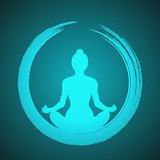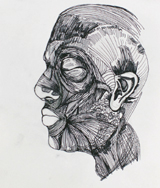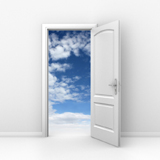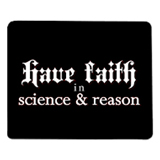Yogic insights into human psychology
Yoga as practical psychology
Abstract
The transition from animal to man is much more than biological. It has brought in the sense of a subjective-self that is other than the bodily needs or desires. Man is conscious of an inner subjective space, in which he can reflect and change, assay and analyse, grow and evolve in many ways. It is a door opening with infinite possibilities. Through yoga we can enter this door and discover much that is now unknown to us.
Foreword
There are two short definitions of yoga that are packed with immense significance for the human race. The first is yoga as practical psychology. The second is yoga as a conscious and concentrated evolution. It is an understanding of yoga along these lines that will open the doors to the future and help humanity reap the full benefits of yogic processes. But let us first understand what they mean and imply. Psychology deals with the science of human behaviour. But human behaviour is a surface phenomenon and what stands behind it is a complex play of forces, both individual and collective and, if we take the yogic view, cosmic forces as well. It implies that an individual is not a separate isolated entity who is at most loosely connected with his immediate environment and circumstances of birth. The entire cosmos is alive in him even though he knows it not. This is a basic premise of yoga that within man dwells the entire cosmos. In a sense it is true of the smallest element of creation. Nothing is really separate and isolated. There is a mutuality, an interdependence, a co-penetration and not just a co-habitation of life with other life, an interconnectedness of the different elements of creation in some common mysterious matrix that holds this mysterious dance of creation. The difference however is that in man all these elements begin to act much more forcefully and palpably. Besides, man can become conscious of these many elements that extend not only in space but also in time (in terms of his past and future). This is because of three unique elements that have begun to emerge in man.Man’s subjective self
First and foremost, man has become aware of a subjective self within him which, though intangible and unmeasurable, is yet the ground of what he inwardly is and becomes. This subjective self opens the doors for man to reach a ground of consciousness wherein he can discover his true Self. It is there that he can also discover the alchemist Energy, the Original Power within him that has gone into the brilliant array of stars as well as in the minutest particle of dust that has built the countless systems of worlds. This Self, this Knowledge, this Power is at its bottom subjective though yet it is the source of all that we ‘objectively’ perceive. The objects that hang in Space and the senses that perceive them are projections of this Formless Reality that extends Itself in Time and Space as forms and patterns that build this many-hued, many-toned universe. It exists as a self-aware Existence, a Consciousness that knows Itself. It is by an objectivisation of Itself that creation begins to emerge out of this luminous Subjective state. Being self-aware we can also call it ‘Being’, what is generally and often crudely termed as God or a Divine Being out of whom creation flows as water and wind upon some mysterious ether which is nothing else but this Being’s infinite Existence extending in Space. The progressive unfolding brings into play what we experience as Time. If we probe any objective reality deep enough we shall discover at first a dance of energy supporting it and if we go still deeper, a bedrock of consciousness. That is why if we truly wish to understand any phenomenon, be it a material object or human behaviour, we need to enter this bedrock, this matrix out of which it is emerging and by which it is being supported. Though One, this dance of energy has many rhythms of which our material universe is just one of them. Similarly though, there are many different states of consciousness ranging from peace and bliss experienced during trance to a total self-oblivion of material nature and all else in between. There is behind all these varied states, the One Infinite Consciousness that limiting Itself, becomes all things. The ego-sense that this is ‘me’, the identification with a surname or a nationality, religion or an ideology, custom or tradition are means for the play of this One Consciousness to draw a magic circle of limitation and create this varied and variegated world. Of course there is a purpose in this mighty play and when we identify with the One Consciousness and know ourselves as That which is beyond all names and forms, we do not kick the bucket and quit the play, though potentially we can do that. Rather we can now consciously participate in the play, know the Wisdom that operates behind differentiations and our role in it.
That is a huge difference, to play the game of life unconsciously, driven by forces often beyond our control that we term as Fate or else to play it consciously, master of our Destiny, accepting some while editing other scenes of the cosmic epic since they have been distorted by the characters playing out their roles. In other words we have a work to do and a role to fulfil. But to know it definitively and fulfil that role perfectly we need to become conscious of the entire script of creation and our unique place in it. This is possible if we touch that Divine core within us or get to the very Source of all things. This is one of the first psychological gains that comes through yoga, an immense gain, a freedom and joy and peace as we navigate through the various acts and scenes of life.
Opening the doors
The doors to this ultimate Consciousness, ultimate Truth, the Reality, call it whatever we like, open by entering into this mysterious subjective space where we become aware of an equally mysterious self that we call as me and myself. Of course this sense of self grows as we grow until we discover that there is not one self but many selves within us. These many selfs jostle for space and their respective expression in time. We become aware of them, first through thoughts and feelings and desires and impulsions and passions and all that we experience as tangible and real within us though there are no immediate visible signs of their presence until we translate them into actions and behaviour. But behaviour is something external. We can also, with the help of another mysterious capacity that has emerged in man called self-reflection or introspection, go inward and discover what lies behind this dance of thought-forms, emotional waves, push of passions, the sting of desires and the impulse to action. After all, even thoughts and feelings are simply forms, forms of inner movements that are not immediately visible outside but are real to the experiencing subjective person within us. However most of us hardly use this capacity of self-reflection. Lost in outer fields of nature and surface movements we simply feel the push of nature but know not the hands that move it. Besides our education, including psychological studies, hardly focus on teaching and learning self-reflection. We are stuffed with theories of human nature but we are not given the skills through which we can truly test these theories and also discover new paradigms of understanding about human nature. Yoga, in contrast, does not theorise much. It teaches us how to discover our Self, the One Self behind our many selves, the true and lasting Self behind the ever-shifting flux of ‘me’ and ‘mine’. It equips us to make our own discoveries rather than taking them on the basis of belief in this or that person or theory. It gives us a practical method to make this discovery. All that it requires is faith, a faith that there is indeed a true Self and man can discover It. It obviously implies also a faith in those who have discovered before us, and there are quite a number. Lastly, it implies also a faith in the Guidance of someone, a teacher or Master who has discovered It and is willing to help us make this discovery. This triple faith as we can easily see is far from any belief-system, cult and sect or creedal religions. These require us to simply take whatever is given in a book or told by someone as a gospel or a dogma without giving us any means or tools to ascertain it for ourselves. Yoga instead gives us a practical way to make this discovery and verify it for ourselves. It starts with faith but ends up in a rich and many-sided knowledge. Such a faith as yoga demands is very much consistent with Science and Reason. It is the starting point of all research. There is a working hypothesis, a statement of postulates based on certain observations and then going about verifying them by the means indicated by the guide or the teacher. The only difference is in the field of observation. Science focuses largely on the outer field, the processes and the phenomena. Yoga, in contrast, focuses on the inner field, the subjective dimension, on the state of consciousness behind the external behaviour. Yes, if we look within and go inwards, not stopping at thoughts and feelings which are simply energy patterns, we shall discover behind these inner movements, states of consciousness which are the origin of what we think and feel and will and hope and desire.
Along with this ability to go within, there is a third capacity in man. It is the ability to shift the different elements of his nature and arrive at new combinations, thereby changing himself. This capacity is of utmost help in yoga and once we discover and develop it, of tremendous help in life. It would mean that human nature can change, that human character and personality are not something fixed and unalterable. We may be brought into this world with a certain predilection, some tendencies; we may develop certain habits of behaviour, some learnt responses that stick to us like leeches, but this can change. In a certain sense all education is a tacit recognition of this truth, all counselling would agree to this in principle. Otherwise there is nothing much to do except to accept ourselves as we are, helplessly tied to our respective nature as animals are tied to the law of their species. But even animals do change, to some extent at least, by coming into contact with human beings. We as human beings have a far greater possibility because, unlike the animal kind, we do not have any fixed law of our nature. Besides there is in man a constant seeking for change. At first this seeking for change takes the form of trying to change our environment, physical and psychological. But the sign of a developed humanity is that it tries to change itself, to re-mould itself along the lines of an ideal condition or person or some figure and role model of the present or past. To this, yoga adds the development of new possibilities and capacities that change the balance of the play of nature’s forces within us. Recognition of this possibility and an effort in this direction is the sole hope for the future of man.
True change
Yes, man can change, says yoga. But this change must proceed from within outwards if it is to endure and be authentic. A mere external change of behaviour by coercion or fear of law is not a change but a manipulation, a layering of the surface while the inside remains as weak and hollow as before. Of course no change is easy. It requires time and persistent effort in the right way and the right direction. It is in the steady application of a deeper yoga psychology that we can hope to find the promise of the future. Artificial Intelligence and other such external measures to make human life comfortable are alright as far as they go but they do not go much further. Even, if man remains what he is in his present stage of development, then these very comfort-zones may become for him a danger-zone. But if we turn our gaze in the direction of upgrading our human intelligence to a Divine Intelligence, or at least a Spiritual Intelligence, then perhaps we stand a chance.
Dr. Alok Pandey, an editor of NAMAH and a member of SAIIIHR, is a doctor practising at the Sri Aurobindo Ashram.
Share with us (Comments,contributions,opinions)
When reproducing this feature, please credit NAMAH,and give the byline. Please send us cuttings.





